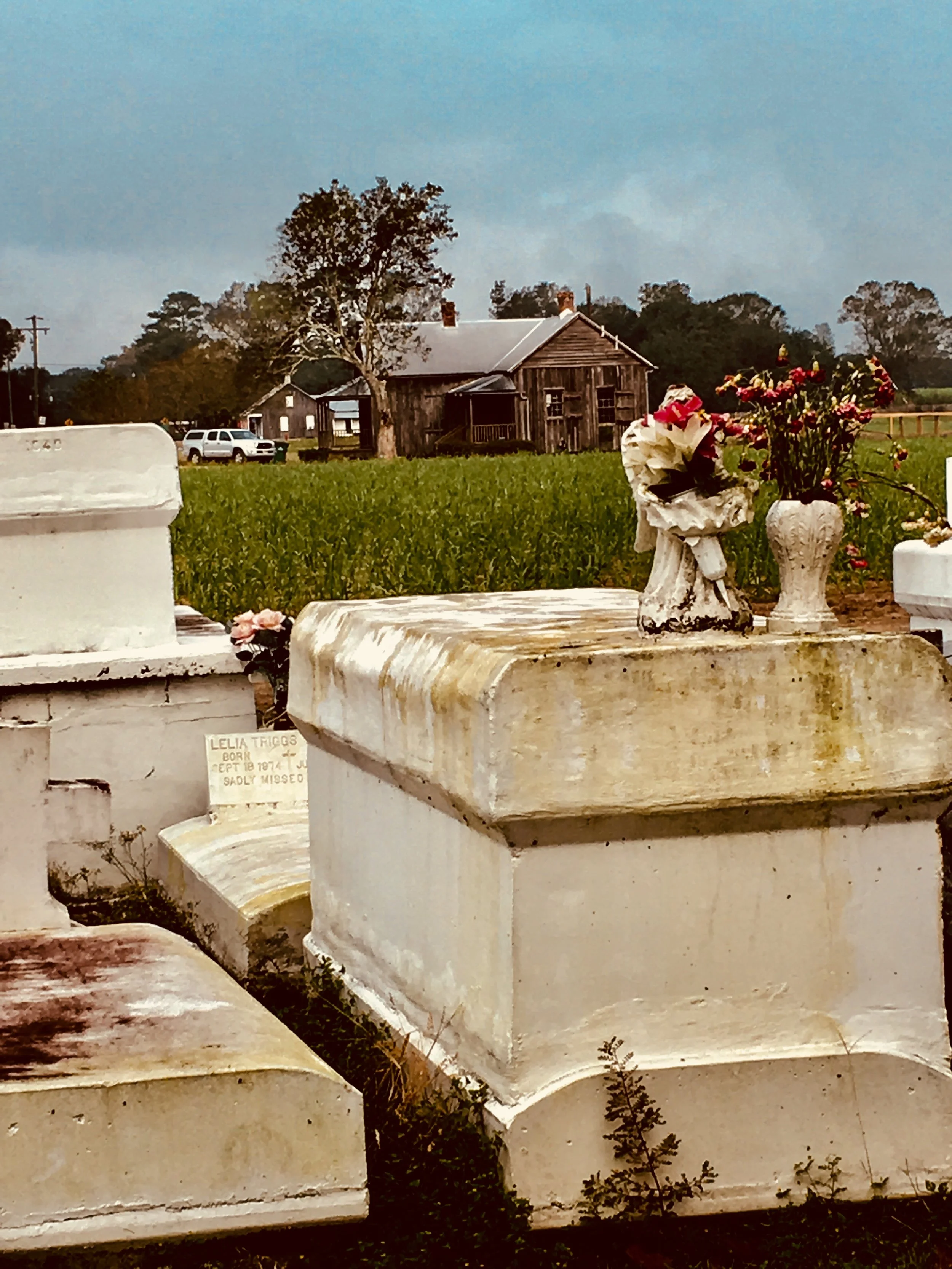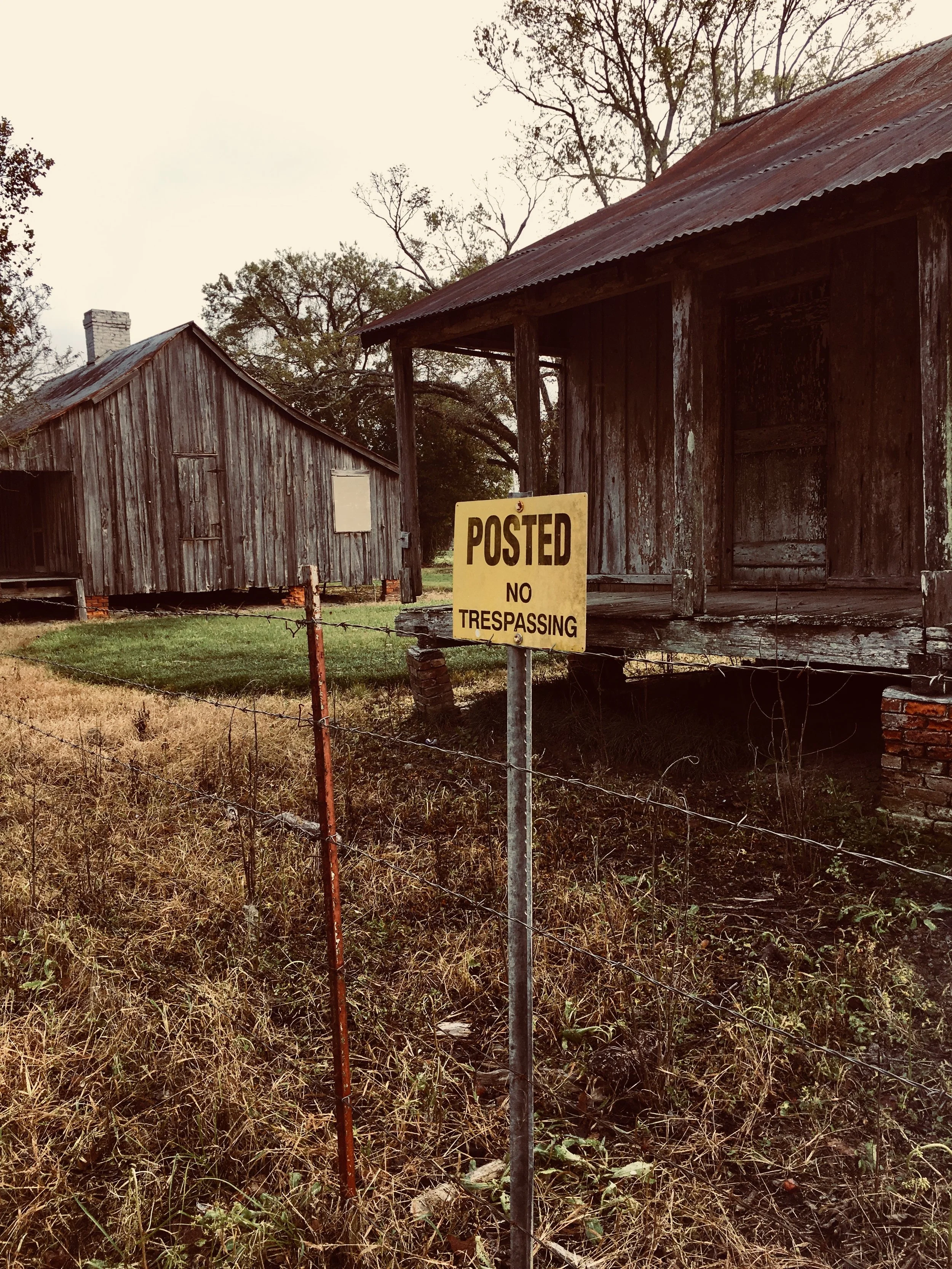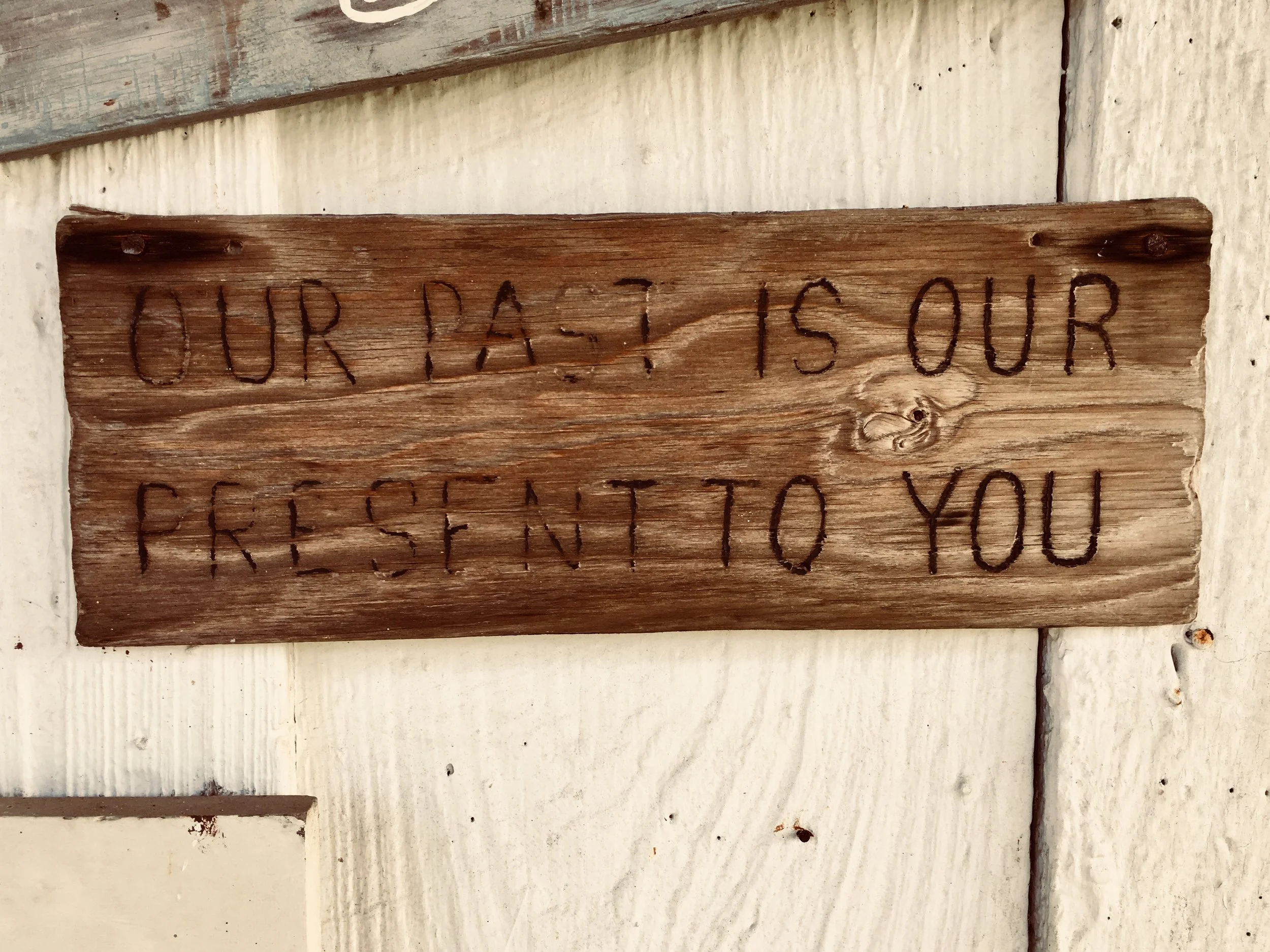Landscapes of Misery
From Louisiana Slave huts to landscapes of the New Zealand Land Wars
Writer: Craig Pocock - Editor: Tim Worrall (Ngai Tuhoe, Te Arawa)
While traveling across Louisiana, the low coastal delta where the Mississippi floods across the land it is hard not to reflect on the the overly simplistic images pop culture paints of the South. Yes there are old timber houses, pickup trucks and churches everywhere. Some traditionally steeple while others are simple cinder block or tin sheds with hand painted signs advertising God and hours of worship.The landscape feels old and wet. Signs of human occupation are littered across the land from above ground whitewashed graves that keep loved ones out of the high water table to ads for BBQ, ice houses and shrimp.
There is a fragile feeling to the human occupation of this land, as if the water and vegetation could take back the dwellings and roads at any moment.
As much as swamps, pick ups and churches are what we have come to expect from the South, the South is much more complex than pop culture often acknowledges. As my brother and I travelled through Louisiana it is clear that this is the epicenter of all things Cajun and Creole with a rich cultural history that comes from the many diverse groups of people making a life in the swamps and waterways after fleeing persecution. The diversity of cultures is tangible in the local music, dancing, food, dialects and place names and Louisiana’s tourism depends on it.
A conversation with a Lafayette local during a late night of whiskey, music and political debate in a Cajun dance hall had us making a detour on our road trip. It led us down a narrow, dead end country road called Laurel Valley which was flanked by tall sugar cane and water. I am not sure I would have been told about this place if it was not for the whiskey the night before.
The sugar cane created a narrow viewing corridor limiting views across the landscape. As we came around the bend we got our first glimpse of what we had come to see; rows and rows of weathered timber huts neatly lined up on either side of what I imagine was once a dirt road.
This was a village of slave huts with a clear grid layout, narrow streets and front porches all looking towards each other. You could still see the old brick sugar mill, now overgrown, and the crane that moved bundles of sugar cane from the collection point into the factory when the factory was operating.
We stood on the shoulder of the road, on the right side of a barbed wire fence. The “no trespass” signs sent a clear message which we wanted to respect. The photos tell the story and I am not going to describe the slave village in detail. What was for me more powerful and unexpected was my emotional reaction to this place. We looked at these neat rows of huts, fascinated that this place actually still existed, yet saddened that it had a need to exist in the first place.
I had always known about the period of history that this stark landscape represents but it’s different seeing it in person. For me it embodies a history of misery for so many - for the slaves that were forced against their will to work and live here, and also for the desperate share farmers who lived in these same huts following the abolition of slavery, for these people had little hope of achieving any more than just existing.
Standing on the side of the road felt like trespassing on someone’s private memories and it was uncomfortable. In the course of an hour half, a dozen pickup trucks drove by, slowing as they passed, I expected someone to lean out of the pickup window and tell us to go away. No one did.
Feeling uncomfortable and challenged is not a bad thing and in that moment I felt connected to this period of history and reflected on the importance of retaining this landscape of misery. It is not comfortable landscape by any means but sometimes there is value in having such reminders of the past so that there can be a deeper empathy for the people wronged. I felt appreciation to the land owners and community that preserved this village so that I was allowed to view it, even if it was only from the side of the road.
Dwelling on the experience back home in San Antonio I was reflecting on the questions: “does New Zealand have the same types of landscapes? Is it even fair to try and compare a landscape of slavery with any landscape in New Zealand?” I think the answer is probably yes because misery is in the eye of the beholder.
I remembered my early years as a landscape architect watching the daily news coverage of Maori and Police facing off during the Moutoa Garden’s occupation.
In 1995 the landscape of Moutoa gardens was a consistent reminder of the colonial wrongs dealt to some local iwi. To local Maori this landscape was more than just a visual reminder, it was an “enabling” landscape. A measure of the Queens chain was physically built into the ground that allowed surveyors to calibrate their instruments which were then used to help confiscate local Maori lands. The landscape design, memorials, park’s name, and even the Queens chain were a constant reminder of that unhappy history and so in 1995 it was the perfect place to occupy to make a point.
I know the Whanganui District Council and local Maori have a positive relationship and are currently working towards addressing the challenges of Moutoa Gardens and it will be a good case study to watch. However I know from working in many of New Zealand’s towns, cities and regions that these landscapes and public spaces do exist in many communities but are often not acknowledged or addressed. It is likely that any community that was close to the New Zealand land wars probably have a Moutoa Gardens/Pākaitore or a Bastion Point / Takaparawhā equant somewhere.
All landscapes are political and viewed through a cultural lens, one person’s war memorial is another’s pillar of hate, one community’s airport runway is another’s desecrated burial ground, one community’s rose garden is another’s historical meeting site flattened and disrespected. All are constant reminders of the wrongs done to a group of people within a community.
However as in the case of the Laurel Valley slave village there may be a case for retaining these landscapes if it helps acknowledge the past and helps heal a community. Landscapes could be used as part of a truth and reconciliation type of process but that can only happen if they still exist.
1. Identification
A starting point might be to acknowledge and record the existence of such cultural landscapes, they might not be classified as heritage landscapes or seem like important public space but they will exist. I know that there is fear in identifying these sites of importance on all sides, often the local iwi do not want to identify sites in the fear of further damaged. Local government some times does not want to identify sites in case it limits future planning and growth opportunities. However unless these sites are identified how do we move forward as a community in acknowledging a fair and equitable record of our past. Like the Laurel Valley Slave huts these sites can become powerful and valuable community assets if managed well.
2. Collaboration with community
Not all landscapes of misery have a place in our society. It is an important question for communities, local government, city managers and designers to consider how these landscapes are managed, edited, interpreted or removed. How do we appropriately acknowledge the past without being seen as supporting symbols or spaces of misery?
Only the community who has the deep and intimate understanding of the history of that place can identifying a landscape of misery and judge the merits of the place and its future role in the community. I understand that this is a challenging and time consuming process often because there is more than one group that has a significant history and role to play in the sites future. The process has to be inclusive, transparent, robust, honest and those voices that are closest to the pain and misery that was suffered should be at the forefront of the discussion.
3. The future of public spaces of misery.
Its not about protecting and keeping all landscapes that have painful pasts or glorify an uncomfortable period of time like the Maori Land Confiscations. Maybe for some landscapes a complete redesign is the best solution but for others a joint partnership in the management of the space or just recognition of the past wrongs be a step in the right direction, thats for the community to decide.
No matter the outcome it is important that the process of identification, communication and transformation is not just about physical change or management of a space but is used to heal communities and inform future generations of the values we have, which hopefully includes transparency and inclusion in our public spaces.






